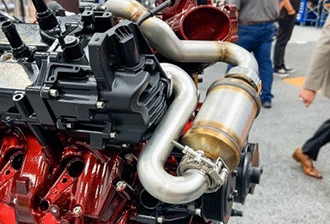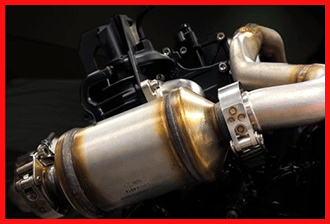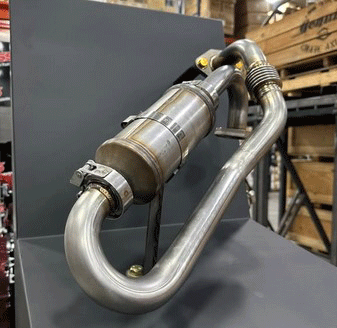Hey there, diesel truck enthusiasts! If you’re anything like me, you’re always on the lookout for ways to keep your rig running smoother and longer without breaking the bank—or the law. That’s where the FASS EGR Filter comes in, and let me tell you, it’s been a revelation for my 2020 GMC Sierra L5P. I’m here to spill the beans on my personal journey with this product, why I think you should grab one ASAP, and how it’s transformed my truck’s performance. Trust me, by the end of this, you’ll be itching to snag one for yourself—it’s that good!
My Experience: A Diesel Lover’s Tale
I’ll be honest—when I first heard about the FASS EGR Filter, I was skeptical. Another bolt-on promising miracles? Been there, done that. But after watching a few YouTube videos (and cringing at the owner’s wild energy), I figured, “Why not?” My Sierra’s EGR system was starting to worry me—soot buildup, potential valve failures, you know the drill. So, I ordered the kit, rolled up my sleeves, and got to work.

Installation took me about four hours, mostly because I’m no pro mechanic. I jacked up the front right wheel, yanked the wheel-well liner, and followed some shaky online instructions. It was tight under the hood—think wrestling a python in a phone booth—but I got it done. The first drive afterward? Smooth as butter. No check engine lights, no weird vibes—just my truck purring like it was fresh off the lot. Over the past few months, I’ve racked up miles, and I’m hooked. Here’s why.
Pros: Why I’m Singing Its Praises
Let’s dive into what makes the FASS EGR Filter a winner in my book. These are the standout perks I’ve noticed firsthand:
- Soot Reduction That Actually Works: FASS claims it traps 85% of particulate matter, and I believe it. My oil samples are cleaner, and I’m not choking my engine with recycled gunk anymore.
- Engine Longevity Boost: Less soot means less wear on my piston rings and EGR components. I’m betting this baby will keep my Sierra humming past 200,000 miles.
- Self-Regenerating Magic: The filter cleans itself during regen cycles—no babysitting required. I love a product that doesn’t nag me for attention.
- Emissions-Friendly Upgrade: No deleting here! I’m keeping it legal while still giving my engine a fighting chance against EGR woes.
- Smooth Performance: Post-install, my truck feels peppier. No hard data, but the throttle response is crisper—like it’s breathing easier.
- Stainless Steel Swagger: The 304 stainless tubing and TIG welds scream quality. It’s tough, durable, and looks badass under the hood.
- Less Oil Contamination: My last oil analysis showed reduced soot content. Cleaner oil = happier engine, and I’m all for that.
- Made in the USA Pride: Knowing it’s engineered and built stateside gives me warm fuzzies. Plus, it’s not some off-the-shelf knockoff.
- Peace of Mind: I sleep better knowing I’m dodging costly EGR valve or cooler repairs. That’s worth its weight in gold.
- Community Buzz: Forums like DuramaxForum.com are starting to rave about it. I’m not alone in this love affair!
Each perk hits home for me. That soot reduction? I used to dread what my intake looked like—now, I’m confident it’s not a carbon graveyard. The self-regen feature is a godsend; I’m not pulling it apart every few months. And staying emissions-compliant? That’s a big deal when you’re dodging hefty fines or failed inspections.
Cons: The Not-So-Perfect Parts
Nothing’s flawless, right? Here’s where the FASS EGR Filter tripped me up. These gripes are real, but they haven’t soured me yet:

- Pricey Upfront Hit: At $1,199 (down from $1,577.89), it’s a gut punch. I had to save up, and it’s not for the faint of wallet.
- Tight Fitment Woes: Installing it was a nightmare—barely a paper’s width between the filter and my A/C line. I wrapped it in heat shield tape to sleep at night.
- Soot Regen Mystery: Where does the burned soot go? Back into the intake, some say. I’m still scratching my head on that one.
- Clamps Could Suck Less: The stock clamps feel cheap—flimsy and prone to slipping. I swapped them for better ones after a week.
- No Clear Cleaning Schedule: “Up to a year” or “100,000 miles” is vague. I’m guessing based on feel, and I hate guessing.
- Heat Concerns: It sits close to sensitive bits under the hood. I’m paranoid about melting wires or cracking reservoirs over time.
- Install Order Matters: Skip a step, and you’re screwed. The instructions need to be followed like gospel, or it’s a puzzle from hell.
- No Instant Power Boost: Don’t expect a horsepower kick. It’s about longevity, not drag strip glory—I learned that quick.
- Limited Model Fit: Only certain years (like my 2020 Duramax) work. My buddy with a 2016 was out of luck.
- Learning Curve: If you’re not handy, good luck. I cursed more than once figuring it out without a mechanic’s lift.
The price stung—I could’ve bought a killer sound system instead. And that fitment? I nearly gave up when the filter grazed my A/C line. The soot question nags at me too; I don’t want it sneaking back into my intake. But these hiccups haven’t killed the vibe—they’re just quirks I’ve learned to live with.
Maintenance & How To Get The Most Out Of It: My Tips
Okay, you’ve got the FASS EGR Filter—now what? Here’s how I keep it rocking and rolling, plus tips to max out its potential:
- Follow Install Order Religiously: Top tube first, then filter, then bottom tube—trust me, it saves headaches. I learned this after an hour of swearing.
- Heat Shield Everything: Wrap the filter and nearby lines in heat tape. My A/C line thanks me, and I’m not risking melted plastic.
- Check Clamps Weekly: Those stock ones loosen up. I swapped mine for heavy-duty V-bands and check them every oil change.
- Monitor Regen Cycles: Pay attention to your truck’s regen patterns. I noticed mine kicks in every 300 miles—keeps the filter humming.
- Oil Analysis Is Your Friend: Get a sample every 5,000 miles. I track soot levels to prove it’s working—and it is.
- Clean at 100,000 Miles: FASS suggests sending it in for a pro cleaning around then. I’m marking my calendar to stay ahead.
- Avoid High-Pressure Washing: They warn against blasting it with air or water—it kills the regen mojo. I’ll stick to their pros for cleaning.
- Pair with a CCV Reroute: I added one to cut oil vapors mixing with EGR gasses. Double whammy for engine health!
- Drive It Hard Occasionally: A good romp on the highway heats things up, helping that self-regen kick in. I blast down I-5 monthly.
- Keep Instructions Handy: That manual’s gold. I stashed mine in the glovebox for quick reference when I’m stumped.
These tricks keep my filter—and truck—in top shape. The heat shield hack was a game-changer; I’m not sweating under-hood temps anymore. And that CCV reroute? It’s like giving my engine a spa day. Stick to these, and you’ll squeeze every ounce of goodness from your FASS kit.
Comparison With Other Brands: FASS EGR Filter Vs. The Rest
How does FASS stack up against the competition? I dug into alternatives like EGR deletes, stock systems, and other aftermarket filters. Here’s the showdown:

- FASS vs. EGR Delete: Deletes kill emissions gear for power but risk fines and voided warranties. FASS keeps me legal and still cuts soot—win!
- FASS vs. Stock EGR: Factory setups dump soot straight into your engine. FASS filters 85% of it out—my intake’s not a coal mine anymore.
- FASS vs. K&N Air Filters: K&N boosts intake airflow, but it’s not EGR-specific. FASS tackles the root soot issue—different beasts, folks.
- FASS vs. Banks Power: Banks offers EGR coolers, not filters. FASS prevents buildup proactively; Banks just cools the mess.
- FASS vs. S&B Filters: S&B’s great for cold air intakes, but no EGR solution. FASS fills a niche they don’t touch.
- FASS vs. Sinister Diesel: Sinister’s EGR kits lean toward deletes. FASS is my compliance-friendly hero—no jail time here!
- FASS vs. AFE Power: AFE’s filters are intake-focused, not EGR. FASS targets the dirty exhaust stream—I need that more.
- FASS vs. Raw Stock: Without FASS, my Duramax would choke on soot by 125,000 miles. Stock’s a ticking time bomb; FASS defuses it.
- FASS vs. DIY Fixes: Rerouting CCV alone helps, but FASS’s 85% soot grab blows my duct-tape hacks out of the water.
- FASS vs. CAT’s Post-DPF EGR: CAT tried moving EGR after the DPF—mixed results. FASS nails it pre-intake, no fuss.
FASS stands out because it’s purpose-built for EGR woes without tossing emissions out the window. Deletes tempt me with power, but I’m not risking a $10,000 fine. Stock’s a non-starter—my engine deserves better. Other brands play in different sandboxes; FASS owns this one.
Frequently Asked Questions (Faq)
Got questions? I did too. Here’s what I’ve puzzled out from my FASS journey:
It traps 85% of the soot in your EGR stream before it hits your engine, saving components from wear. My oil’s cleaner, and I’m stoked.
For me, yes—$1,199 beats $500 EGR coolers every 125,000 miles. You’re paying for longevity, not instant thrills.
Tricky if you’re not a gearhead—took me four hours of cursing. Follow the steps, and you’ll survive.
Conclusion: Why You Should Buy It Now
So, there you have it—my unfiltered take on the FASS EGR Filter. It’s not perfect, but it’s damn close for a guy like me who wants a tough, legal, long-lasting diesel. The pros outweigh the cons, and with a few tweaks, it’s a no-brainer investment. Stop letting soot strangle your engine—grab this kit, bolt it on, and thank me later. Your truck deserves it, and so do you!
